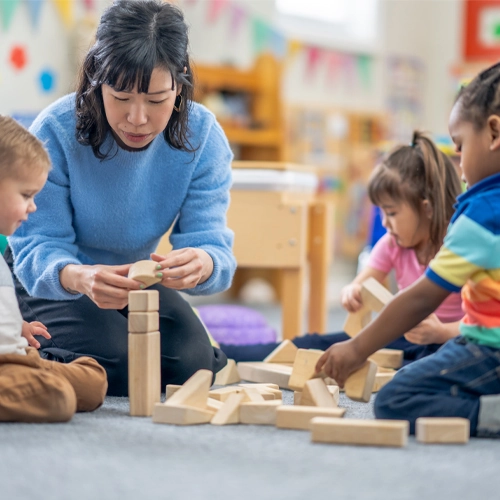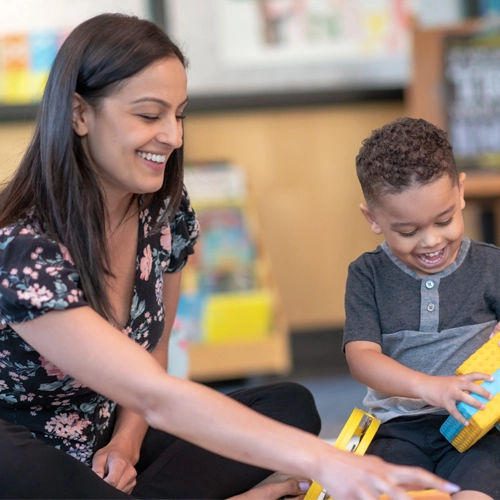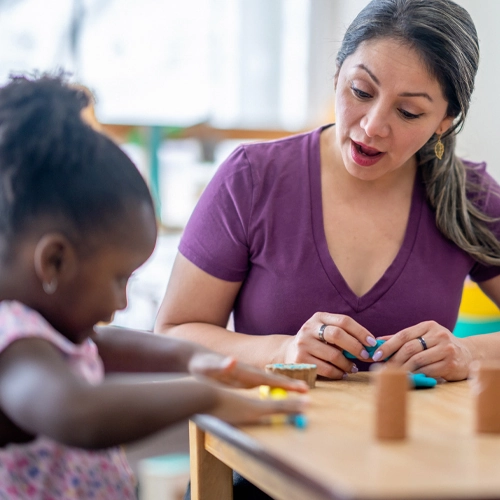
Be Part of the Quality Movement in ECCE
Implementing Virginia’s Quality and Measurement Improvement System requires various roles and responsibilities to ensure that all of Virginia’s children have quality teaching and learning experiences that meet their unique needs. Observers play a critical role in supporting the system by conducting over 30,000 classroom observations each year across the state. Their observations collect data insights that share what children are experiencing in Virginia’s early childhood classrooms and drive improvement and targeted professional development for educators.

What is Virginia Quality Birth to Five (VQB5)?
The Unified Virginia Quality Birth to Five System (VQB5) is a comprehensive initiative designed to enhance early childhood education in Virginia by ensuring quality teaching and learning experiences that are tailored to each child’s needs. Created in response to state legislation, VQB5 aims to measure and improve the quality of all publicly funded early childhood programs serving children from birth to age five. The system not only helps elevate the standards of these programs but also empowers families by providing them with information on quality programming options across different types of programs, making it easier to choose the best fit for their child’s development.
Virginia Code Establishing VQB5
VQB5 - Virginia's Quality Measurement and Improvement System
VQB5 System Guidelines

What is Classroom Assessment Scoring System (CLASS™)?
The CLassroom Assessment Scoring System (CLASS) measure is a process-oriented tool, providing a consistent framework for evaluating teacher-child interactions during pivotal developmental stages, while maintaining a metric that is both context-specific and developmentally appropriate for each age group. Research underscores that the structural aspects of quality teaching—like the materials, curricula, and lesson plans—are valuable primarily through the lens of how educators engage with them. It’s the “how” of teaching—how teachers use their time, interact with students, and utilize materials to optimize every moment—that drives meaningful learning experiences. Through this process-based approach, VQB5 focuses on enhancing these teacher-child interactions, which are essential to fostering a high-quality early learning environment.
Teachstone CLASS
CLASS Research Summary

What Do Observers Do?
In the VQB5 system, over 30,000 CLASS observations are conducted in the fall and spring of each year across more than 10,000 infant, toddler, and preschool classrooms, including those in family day homes and public-school settings. Ready Region Central’s local CLASS observers account for roughly 3,500 of these observations each year.
CLASS observers are trained extensively in each applicable age tool and must demonstrate a clear understanding in application to gain the required certification to conduct observations. During observations, observers gather detailed, classroom-level information on the teacher-child interactions. Observers then use the data to provide personalized feedback to educators, helping them refine their teaching approaches and improve engagement with students. By focusing on the nuances of each classroom’s interactions, feedback is tailored to educator’s specific strengths and areas for growth, fostering continuous improvement in early childhood education quality.
Measuring Quality Interactions

How Do I Become an Observer?
To get involved and become a certified CLASS observer for Ready Region Central, you can register for an online interest session with the team. These sessions provide all the essential information needed before committing to signing up for observer training. Sessions are open to those interested in becoming an independent contractor with Thrive Birth to Five, as well as public school-based and early childhood program-based observers. The sessions are an excellent way to learn more about the role, training requirements, and the impact of becoming a certified observer.
Get In Touch
Connect with Thrive Birth to Five to learn more.
